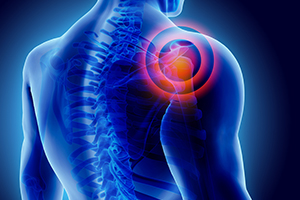Health Blog: Solutions & Wellness Tips
Patients who have PT after shoulder surgery recover quicker

Surgery is only considered after other treatments fail
Subacromial impingement syndrome (SIS) is a painful condition in which tendons or a fluid-filled sac called the bursa in the shoulder become compressed, or impinged, by bones in that region. It's the biggest cause of shoulder pain and is the most common disorder that affects the upper extremities (shoulders, arms, and hands). Patients with SIS are usually managed with of a number of nonsurgical treatments, including rest, injections and physical therapy. In most cases, surgery is only considered for patients that do not respond to these nonsurgical treatments and fail to improve. After surgery, physical therapy is again part of the typical treatment plan to help patients regain the function of their shoulders. Although this approach is commonly used, there is no consensus about the most appropriate strategy to use, and little is known about the effectiveness of different types of exercise programs. It's also possible that patients who have trouble returning to normal activities may require additional efforts to help in their recovery. For this reason, a highly respected type of study called a randomized-controlled trial (RCT) was conducted on the topic. In this RCT, patients with SIS who had surgery were randomly assigned to two different treatment groups to determine which was the most effective for helping them recover.
Patients are given either physical therapy or usual care
Patients with SIS who had a surgical procedure called arthroscopic subacromial decompression—in which a tiny scope is used to release pressure in the area—were recruited for the study between 8-12 weeks after surgery. A total of 126 patients fit the necessary criteria and were randomly placed into either the physical therapy group or the usual care group. Patients in the physical therapy group followed a program that consisted of a combination of both supervised training sessions and home-exercise training. They received between 8-15 training sessions during the first eight weeks. Over the next four weeks, the frequency of these sessions varied depending on how patients responded, and they were told to perform their home exercises more regularly. Sessions lasted up to one hour each and consisted of aerobic exercise on a stationary bicycle, manual therapy performed by the physical therapist and seven exercises that specifically targeted the shoulder. Patients were also instructed to become physically active at a moderate or high intensity for at least 30 minutes three times a week. Patients in the usual care group did not receive any specific treatments but were told to continue the treatments recommended by the hospital. All patients were assessed before being assigned to their groups, and then again three and 12 months later for a variety of outcomes, including strength, range of motion and quality of life.
Following a course of physical therapy should be the norm after surgery
Results showed that at 12 months, patients in the physical therapy group improved significantly more than those that received usual care. This was found to be the case due to better scores on various questionnaires that showed the patients who had physical therapy had better shoulder function and less fear about their condition than the other group. They were also found to be more physically active and had a better overall impression of the changes they experienced from treatment. This RCT, which is the largest study that's ever been performed on the topic, clearly shows that physical therapy leads to numerous improvements for patients with SIS after having surgery. Based on this, physical therapy should be considered a necessary component of recovery following surgery, and it's recommended that a treatment program similar to the one used here is followed to ensure positive results.
-As reported in the June '16 issue of Physical Therapy
July 6, 2017
Back to Health BlogRECENT POSTS
- Stretching Could Be A Game-Changer for Chronic Pain Relief
- Easing the Burden of Tension Headaches With Physical Therapy
- Got Heel Pain? New Study Reveals How to Outsmart Plantar Fasciitis
- How Physical Therapy Can Tame Whiplash-Related Symptoms
- Exercise Therapy May Provide Relief for Chemotherapy-Related Issues
- Unlocking Relief From Elbow Pain With Hands-On Therapy and Exercise
- Are Deep Squats Really as Bad as We Think?
- Reclaiming Your Grip: The Power of Hands-On Therapy for Tennis Elbow
- Runners Can Overcome a Common Knee Condition With Physical Therapy
- How Physical Therapy Can Help Older Adults Stay on Their Feet
